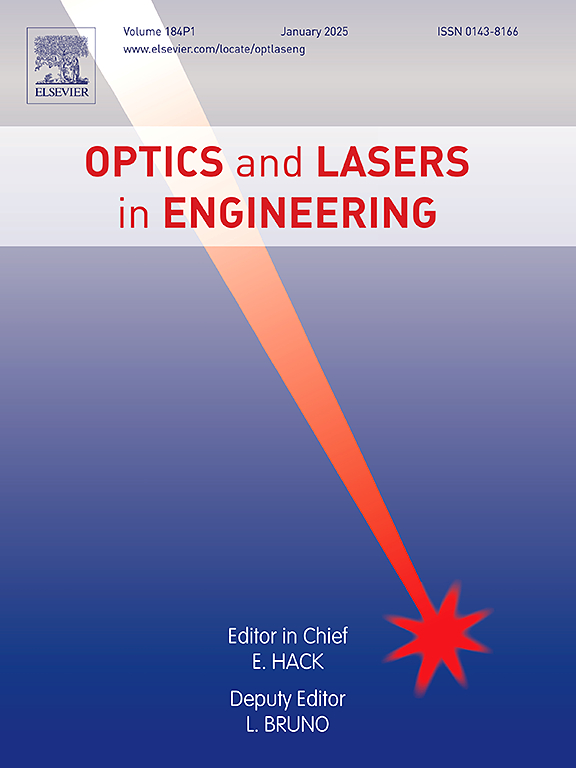基于深度学习的激光散斑对比成像估计绝对大范围血流量
IF 3.5
2区 工程技术
Q2 OPTICS
引用次数: 0
摘要
激光散斑对比成像(Laser speckle contrast imaging, LSCI)在血流测量中得到了广泛的应用,但由于激光散斑对比成像依赖于设备参数、静态散射噪声和血细胞的动态散射类型等因素,无法获得以mm/s为单位的真实血流速度,而只能获得相对血流指数(relative blood flow index, rBFI)。因此,利用LSCI模型估算血流的方式尚未形成标准,阻碍了其广泛应用,特别是在生物医学研究中难以进行多工况间的对比实验。在这项研究中,我们开发了一个基于深度学习的激光散斑对比成像模型(DL-LSCI),通过学习不同血流量的散斑模式的不同时空频率特征来预测绝对血流量。幻影和体内实验都进行了。结果表明,我们的模型能够在我们所知的最大范围内预测不同静态散射噪声下的模体实验中0-231 mm/s的绝对速度范围内的血流量,以及在体内大鼠颈动脉闭塞/恢复模型中的血流量变化。准确度分别超过96%和92%。本研究扩展了LSCI装置在不受成像系统特点影响的绝对区域血流成像中的功能,扩展了LSCI在无基线数据的研究和动物比较研究中的应用。这将有助于促进LSCI技术成为一种标准的定量成像方法,以可视化冠状动脉旁路移植术中血流的时空演变。本文章由计算机程序翻译,如有差异,请以英文原文为准。
Estimation of absolute wide-range blood flow by deep learning-based laser speckle contrast imaging
Laser speckle contrast imaging (LSCI) has been widely applied for blood flow measurements, while it is limited to obtain relative blood flow index (rBFI) rather than real blood speed in terms of mm/s due to its reliance on device parameters, static scattering noise and blood cells’ dynamic scattering type. Thus, the way that blood flow is estimated by LSCI model has not yet formed a standard, and its wide application is hindered, especially comparative experiments could hardly conduct among multiple conditions in biomedical researches. In this study, we developed a deep learning-based laser speckle contrast imaging model (DL-LSCI) to predict absolute blood flow through learning the distinct spatiotemporal frequency characteristics of speckle patterns from varying blood flow. Both phantom and in vivo experiments are performed. It demonstrates that our model enables to predict the blood flow within the widest, to best of our knowledge, absolute speed range of 0–231 mm/s under different static scattering noises in phantom experiments, as well as the varying blood flow in rat carotid artery occlusion/recovery model in vivo. The accuracies exceed 96 % and 92 %, separately. The study extends the LSCI device’s function in the absolute regional blood flow imaging free from the imaging system characteristics, extending the LSCI’s applications in studies where there is no baseline data and in comparative studies among animals. That would help to promote the LSCI technique becoming a standard quantitative imaging method to visualize the spatiotemporal evolution of blood flow in coronary artery bypass grafting.
求助全文
通过发布文献求助,成功后即可免费获取论文全文。
去求助
来源期刊

Optics and Lasers in Engineering
工程技术-光学
CiteScore
8.90
自引率
8.70%
发文量
384
审稿时长
42 days
期刊介绍:
Optics and Lasers in Engineering aims at providing an international forum for the interchange of information on the development of optical techniques and laser technology in engineering. Emphasis is placed on contributions targeted at the practical use of methods and devices, the development and enhancement of solutions and new theoretical concepts for experimental methods.
Optics and Lasers in Engineering reflects the main areas in which optical methods are being used and developed for an engineering environment. Manuscripts should offer clear evidence of novelty and significance. Papers focusing on parameter optimization or computational issues are not suitable. Similarly, papers focussed on an application rather than the optical method fall outside the journal''s scope. The scope of the journal is defined to include the following:
-Optical Metrology-
Optical Methods for 3D visualization and virtual engineering-
Optical Techniques for Microsystems-
Imaging, Microscopy and Adaptive Optics-
Computational Imaging-
Laser methods in manufacturing-
Integrated optical and photonic sensors-
Optics and Photonics in Life Science-
Hyperspectral and spectroscopic methods-
Infrared and Terahertz techniques
 求助内容:
求助内容: 应助结果提醒方式:
应助结果提醒方式:


